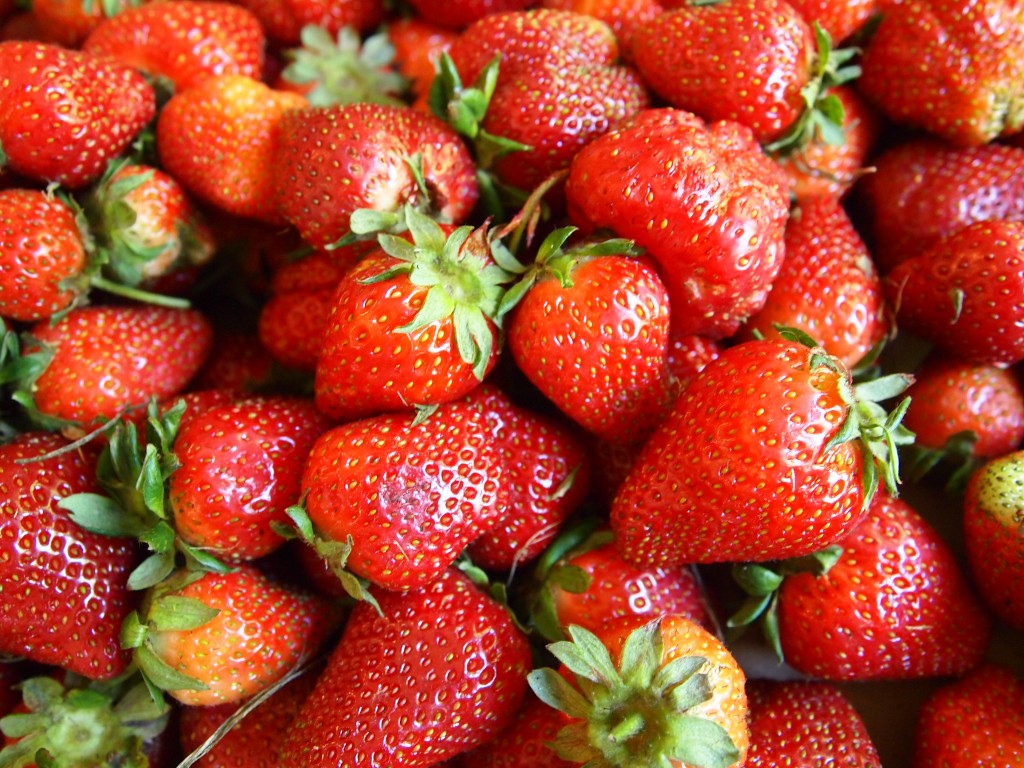
Food Portions: How Much Can I Eat?
Photo Credit: Laine Trees. via Flickr Creative Commons
Portion sizes from restaurants, fast food, and packaged foods have doubled or tripled in size and calories over the last 20 years. This directly influences the portions we have at home, and is a contributing factor to obesity and chronic conditions such as diabetes and heart disease. Think of it this way: if you were to consume a typical portion today versus 20 years ago, you would easily consume about 1600 additional calories due to the growing size of the portions.
Larger portions mean more calories, which adds up to extra weight and can also impact diabetes and other chronic conditions.
Understanding the distinction between a portion and a serving will make it easier to make healthier choices in terms of the amount that you eat. A basic rule: unless you’re super-sizing kale and cauliflower, larger portions mean more calories, which add up to extra weight and can also impact diabetes and other chronic conditions.
Portion vs Serving Size
Definitions from National Institute of Health:
Portion: the amount of food or beverage one person chooses to eats at one time. It can be big, small – you decide.
Serving: a standardized measured amount of food or drink, such as one slice of bread or one cup (eight ounces) of milk.
Packaged Food Servings
The Food and Drug Administration (FDA) provides a set of guidelines that a manufacturer is required to follow when establishing a serving size for a product. The serving size is based on a “Reference Amount Customarily Consumed” (RACC) value, which is the amount of a certain food the average person is likely to eat in one sitting. The FDA established RACC values based on recommendations from food and nutrition organizations and survey data collected from studies that were conducted by the U.S. Department of Agriculture (USDA) in the 1970s and 1980s, a time when Americans consumed less food than they do now. The FDA began a process of updating this data in 2005 to reflect current average intake; however, this is not yet completed.
The FDA encourages, but does not require manufacturers to label a container as a single-serving “if the entire contents of the package can reasonably be consumed at a single-eating occasion,” even if it’s more than the RACC. For example, with a soda, if a person is likely to drink the entire 20-ounce bottle of soda, which is much higher than the RACC value of eight fluid ounces, it can either by label as one serving of 20 ounces or as 2.5 servings per bottle. Most often, manufacturers will choose to list the smaller serving. In the example of the soda, a manufacturer would choose to label one serving as 8 ounces instead of 20 because the nutritional values would present better. The reality, however, is that the average person will consume all 20 oz or 2.5 servings, and therefore double the calories.
The serving on a packaged product is found under Nutrition Facts. The nutritional values you see on the label are for the serving size the manufacturer suggests on the package based on the RACC values. This serving size may be different from the portion you choose to eat. For example, it may list a serving as one serving equals seven chips, but you may choose to eat 35 chips. This portion that you ate equates to five servings, so you would need to multiply all the Nutrition Facts that are listed by five to determine how many calories, fat, carbohydrates, sugars, etc. you consumed in your portion.
The current labels reflect RACC values based on recommendations from food and nutrition organizations and survey data collected from studies that were conducted by the USDA in the 1970s and 1980s, a time when Americans consumed less food than they do now. The FDA began a process of updating this data in 2005 to reflect current average intake; these changes are proposed to take effect this year in 2016.
The proposed updated label guidelines are changing to reflect up-to-date consensus reports and national survey data to represent the current amount people are actually eating and drinking to establish more realistic serving sizes. Part of the proposed guideline updates reflect the new dietary guidelines and include listing the grams of added sugars per serving.
USDA Established Servings
The USDA Center for Nutrition Policy and Promotion establishes standard servings which are presented in a national campaign called My Plate. My Plate promotes healthy and balanced food and beverage choices from a variety of foods including fruits, vegetables, grains, protein foods, and dairy to get the nutrients you need. It also provides standard serving sizes with the recommended number of daily servings from each group based on age. This can be a helpful guide to actually visualize the most reasonable portion sizes to put on your plate for healthy eating.
Better Meal Planning: Use the Exchange List
A committee of the American Dietetic Association and the Academy of Nutrition developed “the Exchange List” of standard servings sizes, which is the basis of a meal planning system designed primarily for people with diabetes. It also provides overall healthy guidance for serving sizes and meal planning for anyone. It is one of the most universal and widely utilized systems for serving sizes and meal planning.
Ornish Program Serving Sizes
The Dr. Ornish Program for Reversing Heart Disease uses the exchange list as a model to make it easy for people that already using this meal planning system to manage count carbohydrates and best manage their diabetes or other conditions. The recommendation is to include a variety of food from each food group with 6 or more servings from whole grains or starchy vegetables; at least 3 servings of vegetables; 2-4 servings of fruit; and 3-6 servings from plant-based protein such as legumes and soy foods.
Simple Strategies for Servings
A simple approach is to visualize common household items as noted below. Practicing Mindful Eating also helps.
- Computer Mouse: serving of starchy vegetable such as potato, sweet potato or winter squash
- Basebell: medium fruit or one serving of raw vegetables
- Light Bulb: serving of cooked vegetables or cooked oatmeal
- Poker Chip: one tablespoon salad dressing (recommend fat-free)
- Cassette Tape: serving of bread (one slice)
- Two Dice: one ounce of cheese (recommend fat-free)
- Golf Ball: two tablespoon servings, example: hummus
- Deck of Cards: three ounces of tofu or tempeh
Do you feel you have an awareness about the size of your food portions?







